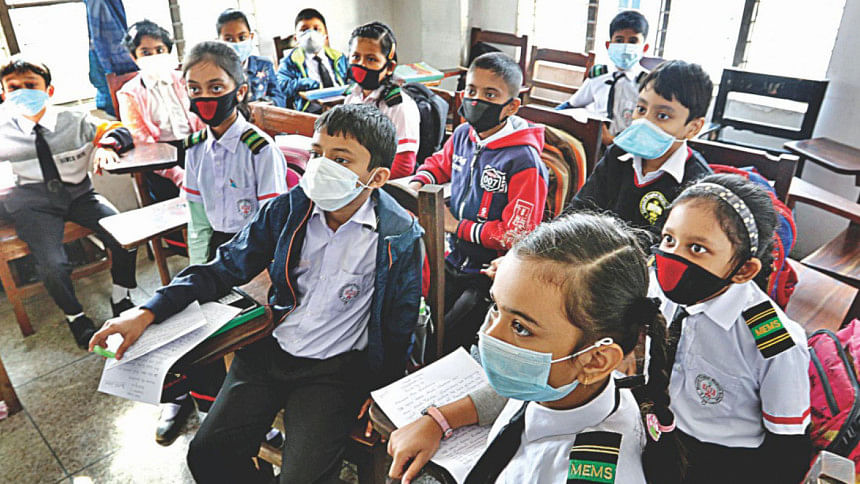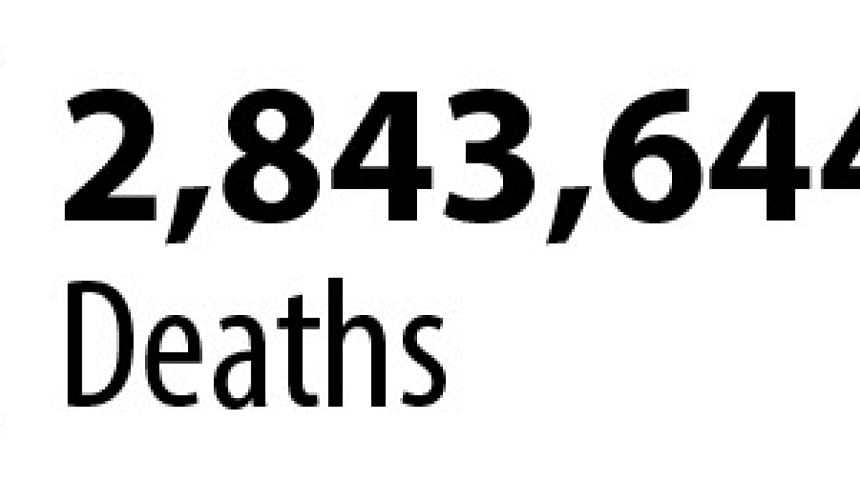Education Crisis in South Asia: Covid to cause $1 trillion losses

The prolonged closure of schools is causing an education crisis that may cost Bangladesh and other South Asian countries over $1 trillion in lost earnings in the long run, according to a World Bank report.
Schoolchildren could lose a whole year of learning due to the pandemic, said the report launched on Wednesday.
"A Bangladeshi student may lose as much as Tk 3,000 per month as a result of lost schooling. This is a serious loss. It could increase poverty," Zahid Hussain, former lead economist of the WB's Dhaka office, told The Daily Star.
The government should take immediate steps to make sure the digital devices needed for online education are available for all people in the urban and rural areas, he said.
"The report shows that Bangladesh's education budget has increased. But it has increased as the allocation for the Rooppur [Nuclear Power Plant] Project was accounted for in the education budget… We need to increase the actual education budget."
An estimated 5.5 million students are likely to drop out due to Covid-19 related income losses, which is over half of the total estimated global dropouts, said the report titled South Asia Economic Focus, Spring 2021: South Asia Vaccinates.
Prolonged lockdowns to suppress the spread of coronavirus in South Asia have implied higher risks for domestic violence and reduced access to education for girls, it added.
South Asia, which grapples with high stunting rates among children and accounts for more than half of the world's student dropouts due to Covid-19, needs to ramp up investments in human capital to help new generations grow up healthy and become productive workers, the Washington-based global lender said in a statement.
The education budgets in South Asia do not appear well-positioned to respond to the unfolding crisis. Across South Asia, the amounts committed in central government budgets for education have fallen by 2.4 percent in real terms from 2019 to 2021.
The report said India's central budget for education dropped by 11 percent in the period while Bangladesh's budget rose by 12 percent.
The World Bank introduced a concept several years ago known as learning-adjusted years of schooling (LAYS). It seeks to combine access and learning outcomes into a single measure. It combines quantity (years of schooling) and quality (how much a student knows at a given grade) into a single summary measure of human capital in a society.
The latest report said estimates of the loss of LAYS in the third quarter of 2020 were based on scenarios between three to seven months of closures.
"As things stand, it seems an even more pessimistic scenario is unfolding -- one where schools have been shuttered for nine months. Learning-adjusted years of schooling in the South Asia region falls from a pre-Covid baseline of 6.5 years to 5.5 years -- suggesting that children could lose a full year of learning adjusted schooling," said the report.
The World Bank report said many of these students will find it harder to return the longer they are away from school. The effects on their expected future lifetime earnings will be exceptionally large compared to a scenario where Covid-19 never occurred.
The typical student can expect to lose as much as $445 annually as a result of lost schooling and learning. In the long run, this could cost the South Asia region over $1 trillion in lost earnings.
"This amount is almost a quarter of what the region will spend to educate this generation of students."
The closures kept 391 million students out of school in South Asia. Many probably left school to help families with lost income. School closures in South Asia, on average, have been maintained for longer compared to the global average, despite findings that children, in general, have low caseloads and insignificant death rates from the virus.
Schools in Maldives and Pakistan were kept mostly open, while Pakistan's approach to school closures varied across provinces and changed during the year. Schools in India received national guidelines for states to decide, but a national directive for the reopening of schools and colleges for non-virtual learning only came in January 2021. "The consequent loss of skills will reduce the productive capacity of the economies in the region for years to come."
Between March 11, 2020 and February 2, 2021, Bangladesh kept schools closed more days than any other South Asian country.
Professor Syed Md Golam Faruk of Directorate of Secondary and Higher Education said TV, online and assignment-based lessons were going on to make up for the learning loss.
"We are assessing the education loss due to the closure. We will make special plans like arranging extra classes for students, who might lag behind due to the digital divide," he told The Daily Star.



 For all latest news, follow The Daily Star's Google News channel.
For all latest news, follow The Daily Star's Google News channel. 



Comments